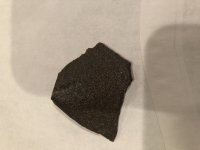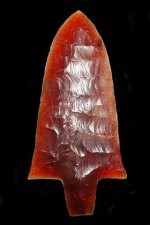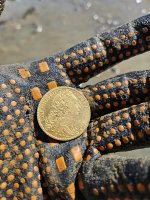uniface
Silver Member
Found in North Dakota or Ohio by Harlan Snyder (who lived in West Virginia but hunted on vacations in Ohio and North Dakota -- unfortunately not keeping track of where the stuff he found was from); gotten in a trade for some Early Archaic points from Steve Worden.
Material is red Hixton silicified sandstone (the red is pretty scarce). It's a uniface with retouching pretty much all the way around except for the striking platform at the base. The size (2.5 inches) and shape suggest Early Archaic but the extent of the conservation on it (making every edge count) is paleo.
Your call.
Material is red Hixton silicified sandstone (the red is pretty scarce). It's a uniface with retouching pretty much all the way around except for the striking platform at the base. The size (2.5 inches) and shape suggest Early Archaic but the extent of the conservation on it (making every edge count) is paleo.
Your call.
Attachments
Upvote
0








 ?
?





